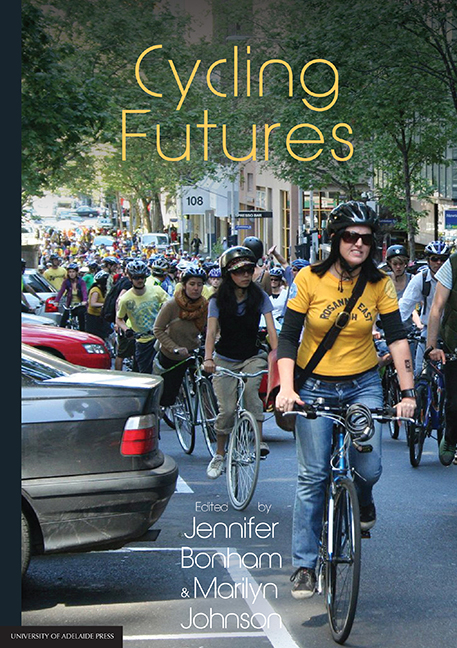Book contents
- Frontmatter
- Contents
- Preface
- Editors
- Contributors
- PART I Current challenges
- PART II Strategies for change
- 9 Gender and cycling: Gendering cycling subjects and forming bikes, practices and spaces as gendered objects
- 10 Making (up) the child cyclist: Bike Ed in South Australia
- 11 More than a message: Producing cyclists through public safety advertising campaigns
- 12 Spaces for cycling
- 13 Off-road cycling infrastructure
- 14 Teaching Australian civil engineers about cycling
- 15 What should planners know about cycling?
- 16 Skilling landscape architects and urban designers for design of bicycle parking and network facilities
- 17 Cycling and Australian law
14 - Teaching Australian civil engineers about cycling
from PART II - Strategies for change
Published online by Cambridge University Press: 25 July 2017
- Frontmatter
- Contents
- Preface
- Editors
- Contributors
- PART I Current challenges
- PART II Strategies for change
- 9 Gender and cycling: Gendering cycling subjects and forming bikes, practices and spaces as gendered objects
- 10 Making (up) the child cyclist: Bike Ed in South Australia
- 11 More than a message: Producing cyclists through public safety advertising campaigns
- 12 Spaces for cycling
- 13 Off-road cycling infrastructure
- 14 Teaching Australian civil engineers about cycling
- 15 What should planners know about cycling?
- 16 Skilling landscape architects and urban designers for design of bicycle parking and network facilities
- 17 Cycling and Australian law
Summary
Introduction
At present over half the world's population lives in urban areas, with that figure expected to rise to two-thirds by 2050 (United Nations, 2014). Accelerating urbanisation along with prevailing urban lifestyles and consumption patterns are placing considerable pressure on planetary systems, with scientific concerns mounting about the risks associated with exceeding the safe operating space for humanity (Rockstrom et al., 2009; Steffan et al., 2015). Even by world standards, Australia is a highly urbanised society with nearly 90% of the population residing in its urban areas (World Bank, 2015) and the national challenges it faces in the context of sustainability firmly in the spotlight (National Sustainability Council, 2013; see also Kingham & Tranter, Chapter Seven, this volume).
While urban areas face many challenges from a sustainability perspective, the issue of transport is of particular concern. Increasing problems associated with urban mobility — including traffic congestion; death and injury from road crashes; vulnerability of energy sources; and adverse environmental impacts, such as poor local air quality and global climate change — are challenging governments around the world. These problems have been magnified because the motor vehicle is the predominant form of urban mobility (Sperling & Gordon, 2010). There is a growing awareness of the need to prioritise moving people rather than cars (Wright, 2001) and a broad range of both supply- and demand-oriented measures are available to address these challenges. Integrating transport and land use planning, expanding public transport and facilitating greater travel by walk and bicycle are seen as key actions (Schiller, Bruun, & Kenworthy, 2010; Tumlin, 2012). While there are no silver bullets, the National cycling strategy 2011-2016 in Australia notes that ‘against the backdrop of a growing population, the highest ever obesity levels and significant environmental challenges — cycling offers a wealth of benefits’ (Austroads, 2010, p. 8).
Australia's National cycling strategy sets what it acknowledges is an ‘aspirational’ aim (Austroads, 2010, p. 8) to double the number of people cycling in Australia by 2016, and notes that both
[d]eveloping high quality networks and facilities for cyclists, as well as ensuring that all local planning and transport plans are fully integrated and address the needs of cycling are … critical. (p. 5)
- Type
- Chapter
- Information
- Cycling Futures , pp. 303 - 320Publisher: The University of Adelaide PressPrint publication year: 2015

